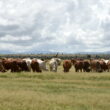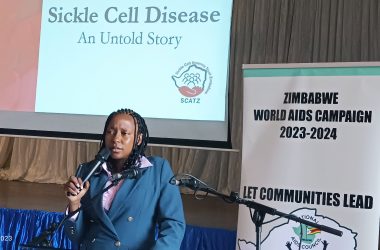
By Conrad Mwanawashe
Enhancing the global partnership for sustainable development, complemented by multi-stakeholder partnerships that mobilize and share knowledge, expertise, technology and financial resources, to support the achievement of the sustainable development goals in all countries, in particular developing countries, is one of the targets of the Sustainable Development Goal 17 of the United Nations.
SDG 17 is about strengthening the means of implementation and revitalizing the global partnership for sustainable development.
The UN believes that a successful development agenda requires inclusive partnerships — at the global, regional, national and local levels — built upon principles and values, and upon a shared vision and shared goals placing people and the planet at the centre.
Partnerships have become more important especially at a time when, due to the COVID-19 pandemic, the global economy has contracted sharply experiencing its worst recession since the Great Depression.
According to the UN, strong international cooperation is needed now more than ever to ensure that countries have the means to recover from the pandemic, build back better and achieve the Sustainable Development Goals.
The Federation of Young Farmers Clubs in Zimbabwe Trust (FYFCZ) has adopted the importance of multi-stakeholder partnerships as a way of building capacity among young farmers. This is in line with government’s position on joint ventures.
In pursuit of this, the Federation hosted the Inaugural Joint Venture and Investment Cocktail at the close of March which brought together investors and young farmers.
Addressing the function, Commissioner for the Zimbabwe Land Commission and former FYFCZ Chief Executive Phillip Sewera said joint ventures are the best avenue to “change the story”.
“The policy position on joint ventures is a game changer. Let’s change the story,” said Sewera.
Dr John Basera, Permanent Secretary for Lands, Agriculture, Fisheries, Water and Rural Development weighed in saying: “Joint Ventures are very critical and are a panacea to seeing real transformation in the agricultural sector. Land allocation and distribution is now a thing of the past, the new focus embraces two sets of three key elements; Production, Production and Production; Productivity, Productivity and Productivity. Colleagues, this can only be achieved if we are alive to the funding challenges experienced by our farmers.”
“Experiences from Covid-19 pandemic that disrupted global logistics prompted government to be in-ward looking to ensure adequate supply of strategic food commodities. The geopolitical war between Russia and Ukraine has buttressed our resolve to attain self-sufficiency at any cost. This can be done; we did it in the past and surely, we can do it now and forever. All we must do is to make the most of what we have. Yes, land we have, is it all productive? That is a big bold no!!! Then we are enjoined put our heads together, scale up our current operations and size of investments to be made. I must say, the only direct route to this endeavour is via Joint Ventures and Contract Farming.
“Some might have reservations through prior experiences with these noble initiatives. Let me hasten to say, Ministry and government have renewed vigour to pursue these initiatives as they are the only panacea to put more farmland to productive use,” said Dr Basera.
Private institutions and individuals with financial resources were previously shying away from committing to Joint Ventures with farmers on the basis of a belief that the investment will not be safe but government through the ministry took account of these concerns and redesigned the whole model so that it will be a win-win scenario.
“Joint Ventures enhance access to agricultural inputs for farm owners with poor resource endowments at the same time also ensuring open access to land for investment by investors without actually owning a piece of land,” said Dr Basera.
“A1 farms now cover approximately 4.2 million hectares including around 150,000 farms and A2 farms cover approximately 2.7 million hectares across 20,000 farm units. With Joint Ventures colleagues, I see over 170,000 households transitioning to becoming 170,000 business units operating on over 6.9 million hectares of land. Land is a finite resource, therefore, not every deserving applicant or citizen will get it, however, I wish to emphasize that one does not need to own land in-order to do business on land. It is in this regard that my Ministry is strongly encouraging Joint Ventures to open up more idle land into productive land.
“Government approved a Joint Venture Agreement Framework which allows investors to undertake farming operations with the consent of Government. An approved Joint Venture protects the investment especially for the ringfenced period. A joint venture database, for the purpose of match-making available underutilized and unproductive land units with potential Joint Ventures partners is being developed.”
General Manager – Vaya Digital Farmer, Felix Vengesai said at the meeting that joint ventures are one way of securitization of investment funds. “The joint venture platform should be part of the agriculture ecosystem,” said Vengesai.
Simbarashe Mhungu from CBZ Agro Yield said the platform could one of the ways to tap into the Zimbabwe diaspora economy.
“Did u know that Zimbabwe’s economy in the diaspora is bigger than Zimbabwe’s economy locally? The economy in the diaspora has liquidity because they have access to capital and financial instruments while in locally we have access to assets such as land. We need to find a way to match the liquidity in the diaspora economy with the assets in the local economy,” said Mhungu.
According to the new legislation, no beneficiary of the land reform program can allow or permit anyone to engage in a farming venture on the allocated land on crop sharing or profit-sharing basis without firstly a written agreement which is, secondly, approved by the Minister.
“Any arrangement that does not comply with the two provisions is illegal and unenforceable at law. Further any such arrangements would go against section 1(c)(i) of the conditions applying to the offer of land under the Land Reform Program which states that the beneficiary shall not ; “cede, assign or make over any right or obligation or sublet or part with possession or grant any form of right of occupation in respect of the farm or part thereof without prior written consent of the Minister”. Farmers, it is important to note that any breach of this provision will result in the cancellation of the offer letter. I am sure, we are now guided accordingly,” said Dr Basera.
He said processing of applications will not exceed 72 hours to get a joint venture approved if all the requirements are in order:
The requirements include;
A signed agreement by the parties which has to be fair, practical and include provisions that allow for skill transfer at the close of joint venture. We expect the landholder to have gained valuable knowledge to start farming on their own.
A valid offer letter on land that is not subject to dispute or an intention right-size the farm. The lawyers will check with the province and district officers in this regard before approval.
The landholder has to be up to date with payments of their lease rental.
To date, 1640 joint ventures have been approved starting from 2020 when the policy was put in place and this translates to 150 000 hectares currently under joint ventures.
Progressive minds, voices are required in the Farms-Investment Matching process. The Federation of Young Farmers Club Zimbabwe (FYFCZ) can ably lead on this and provide relevant information, farm profiles; that enable quicker and guided Joint Venture endorsements. I urge the Federation to gather all related information on Joint Ventures processes and am looking forward to having a template of the Farms-Investment Matching documentation for further input from my Ministry. This requires the tenacity, courage, determination and foresight of all stakeholders in the agricultural value chains for us to deliver on this and have an everlasting celebration.
“The Farms Profiles initiative is a game changer and can potentially lead to prompt opening of investment floodgates for strategic Joint Ventures which advance agricultural production, knowledge and skills transfer, infrastructure development amongst other core benefits. Colleagues, let me also take this opportunity to strongly encourage farmers to provide information that investors can act upon,” he added.
Zimbabwe aims to transform agriculture to a US$8.2 billion sector from US$5.8 billion, contributing at least 20 per cent to the Gross Domestic Product by 2025. In 2021, the sector grew by 36.4% which led to a gross value close to US$8 billion. The same year, Zimbabwe’s economy grew by 7.8% and this growth was largely driven by the growth in the agricultural sector.
“This confirms that transforming the sector for the better is doable. We are all expected to do more and we envisage 10% growth this year notwithstanding the challenges experienced by our farmers,” according to Dr Basera.
Zimbabwe has a total land area of 39.6 million hectares and out of this, 33.4 million hectares are available for human settlement while the rest is reserved for national parks, forests and urban settlements. Land that was compulsorily acquired for resettlement of people in Zimbabwe was acquired from 15.5 million hectares that was under commercial production by the Whites. The exercise opened opportunities for the indigenous Zimbabweans to have access to land and date a total of 12.6 million hectares have been used to resettle 149 743 A1 and 20 010 A2 farmers.










